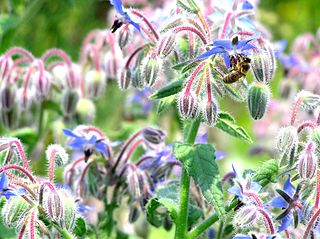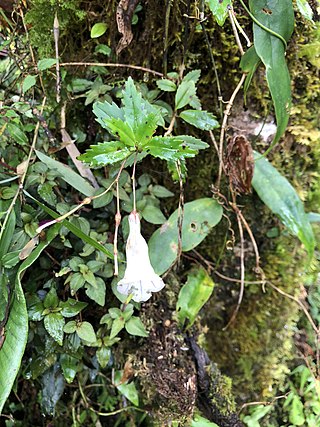
Gentiana is a genus of flowering plants belonging to the gentian family (Gentianaceae), the tribe Gentianeae, and the monophyletic subtribe Gentianinae. With over 300 species, it is considered a large genus. Gentians are notable for their mostly large trumpet-shaped flowers, which are often of an intense blue hue.

Boraginaceae, the borage or forget-me-notfamily, includes about 2,000 species of shrubs, trees, and herbs in 146 to 154 genera with a worldwide distribution.

Bauhinia is a large genus of flowering plants in the subfamily Cercidoideae and tribe Bauhinieae, in the large flowering plant family Fabaceae, with a pantropical distribution. The genus was named after the Bauhin brothers Gaspard and Johann, Swiss-French botanists.

Chrysosplenium is a genus of flowering plants in the family Saxifragaceae. It includes 84 species found throughout the Arctic and northern temperate parts of the Northern Hemisphere. The highest species diversity in eastern Asia, and two species are found disjunctly in northern South America.

Anaphalis is a genus of herbaceous and woody flowering plants within the family Asteraceae, whose members are commonly known by the name pearl or pearly everlasting. There are around 110 species with the vast majority being native to central and southern Asia. There is one species native to North America that is fairly well known and popular in cultivation, namely the western pearly everlasting.

Tournefortia, often called soldierbushes, is a genus of flowering plants in the borage family, Boraginaceae.

Boraginoideae is a subfamily of the plant family Boraginaceae s.s, with about 42 genera. That family is defined in a much broader sense in the Angiosperm Phylogeny Group (APG) system of classification for flowering plants. The APG has not specified any subfamilial structure within Boraginaceae s.l.

Flemingia is a genus of plants in the family Fabaceae. It is native sub-Saharan Africa, Yemen, tropical Asia, and Australasia. In Asia the species are distributed in Bhutan, Burma, China, India; Indonesia, Laos, Malaysia, Nepal, Pakistan, Papua New Guinea, Philippines, Sri Lanka, Taiwan, Thailand and Vietnam. The genus was erected in 1812.

Cremanthodium is a large genus of flowering plants in the daisy family.

Eritrichium is a genus of flowering plants in the family Boraginaceae. It contains 78 species. Notable members include Eritrichium howardii and Eritrichium nanum.

Lysionotus is a genus of flowering plants in the family Gesneriaceae. It occurs in the Himalayas, China, Japan, and Southeast Asia. The genus was described by David Don in 1822.

Trigonotis is a genus of flowering plants belonging to the family Boraginaceae. It includes 70 species which range from southern European Russia to Asia and New Guinea.

Hemiboea is a genus of flowering plants belonging to the family Gesneriaceae.
Loxostigma is a genus of flowering plants belonging to the family Gesneriaceae.
Maharanga is a genus of flowering plants belonging to the family Boraginaceae.
Dichocarpum is a genus of flowering plants belonging to the family Ranunculaceae.
Lasiocaryum is a genus of flowering plants belonging to the family Boraginaceae.












